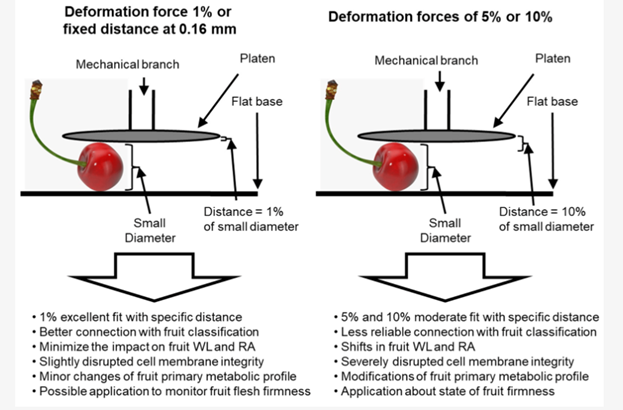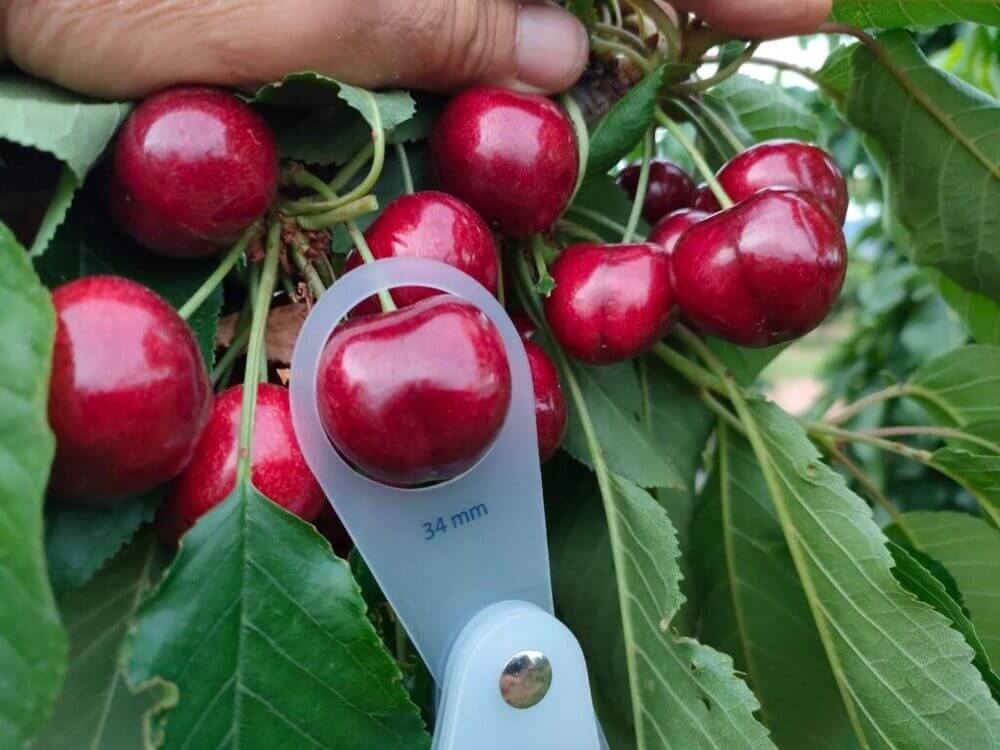Physical, chemical, enzymatic or microbiological changes can be the cause of the quality decline that occasionally occurs in sweet cherries between harvest and consumption. In addition to the economic losses resulting from quality changes, the potential presence of toxins or pathogens represents a risk for the consumer. Several plant species in the temperate zone are infected by Botrytis cinerea, a haploid, filamentous heterothallic fungus.
This fungus starts the infection directly in the field. It is in fact endowed with sclerotids, special biological structures that allow it to be preserved during the most unfavourable periods, until favourable atmospheric conditions are created for the formation of spores (called conidia). During rainy events, these spores disperse and deposit on various parts of the plant.
Initially, they are visible at flower level, located at the base of the receptacle in a resting state. However, they become visible during the post-harvest period, when the fruit ripens. Ultimately, cherries are completely destroyed when they develop rapidly under favourable conditions.
The economic losses associated with the disease induced by grey mould are considerable. To try to reduce the contamination rate, various treatments with ultraviolet (UV) rays are being experimented with. Researchers at the Tashkent State Technical University (Uzbekistan) evaluated the effectiveness of different combinations of distance and duration of ultraviolet (UV-C) treatment in comparison to untreated cherries.
Ten cherries per treatment were placed in a polypropylene container and kept at room temperature for five days. In the untreated cherries, it was observed that filamentous fungi developed on the fruit surface after three days and completely enveloped the fruit after five days. The safety of the cherries in the outdoor environment was further increased by two days due to the infection that started to develop on the fifth day after UV-C treatment.
To assess the impact of UV-C on cherries, the term ‘fungal infection’ was defined as the number of infected cherries divided by the number of total cherries. Interventions at a distance of 25 cm and 35 cm were the most effective, as the lowest infection values of 37% and 40%, respectively, were obtained.
This is due to the fact that sweet cherries have a lower incidence of filamentous fungi visible to the naked eye. Consequently, it can be concluded that the most appropriate distances to position the fruit in relation to the UV lamps for irradiation are 25 cm and 35 cm, respectively, and that the most appropriate treatment exposure time to achieve the desired effect is 6 minutes.
The reason is that UV-C radiation damages the DNA of microorganisms, causing mutations that hinder cell replication and ultimately lead to microbial mortality. Immediately harvested fruits are resistant to fungal infections but become more susceptible to infection during the ripening process and after harvesting.
This is because Botrytis cinerea can remain latent at the base of the receptacle, causing the fruit to rot only when it reaches maturity. The results of this study are reliable and make it possible to identify the optimal processing method for preserving sweet cherries. This will increase the availability of the fruit for an extended period and ensure that the product is of adequate quality and price for the end consumer.
Source: D E Saparov et al 2023 IOP Conf. Ser.: Earth Environ. Sci. 1231 012033. 10.1088/1755-1315/1231/1/012033.
Image: Paicent
Melissa Venturi
University of Bologna (IT)
Cherry Times - All rights reserved












